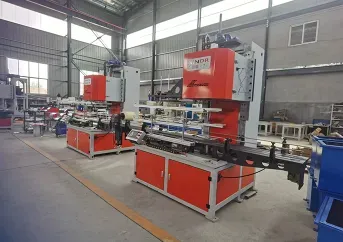types of paving equipment
Understanding Types of Paving Equipment
Paving equipment plays a critical role in the construction and maintenance of roads, parking lots, and various types of surfaces. This machinery is designed to ensure that pavements are laid down efficiently and effectively, providing a durable result that meets safety standards. Here, we will explore the different types of paving equipment commonly used in the industry.
1. Asphalt Pavers
Asphalt pavers are essential for laying asphalt on roads and highways. These machines consist of a tractor unit with a large hopper and a screed at the rear. The hopper holds the hot asphalt mix, while the screed helps to spread and level the material as it is laid down. There are two main types of asphalt pavers wheeled and tracked. Wheeled pavers are more mobile and suited for thinner layers, while tracked pavers offer better stability and are ideal for larger projects.
2. Concrete Pavers
Concrete pavers, or slipform pavers, are used to create uniform concrete surfaces without the need for forms. These machines utilize a continuous pouring process, and they move along a predetermined path, laying down concrete in a specific format. The advantage of concrete pavers is their ability to create smooth surfaces efficiently. They are perfect for highways, airfields, and large-scale paving projects where precision is critical.
3. Compactors
Compactors are vital for preparing the ground before laying any pavement. They come in various types, including plate compactors, vibratory rollers, and jumping jacks. Each type has its application plate compactors are perfect for smaller areas, vibratory rollers are used for large expanses, and jumping jacks are meant for deep compaction in tight spots. The primary function of a compactor is to densify the soil or asphalt, ensuring a solid foundation for the pavement.
types of paving equipment

4. Rollers
Rollers are another crucial piece of paving equipment utilized to compact the surface of asphalt or concrete after it has been laid. There are several types of rollers, including static, vibratory, and pneumatic-tired rollers. Each type has its unique method of operation, and they are often used in combination during the paving process. For instance, a vibratory roller is commonly used first, followed by a pneumatic roller for a smooth finish.
5. Curbers and Gutter Machines
Curbers and gutter machines are specialized tools used to shape concrete into curbs and gutters during the paving process. These machines help create continuous and uniform structures integral to road drainage systems. They are commonly used in conjunction with concrete pavers and are vital for ensuring proper stormwater management in paved areas.
6. Broom and Sweeping Machines
Once the paving is completed, it’s essential to maintain cleanliness and safety. Broom and sweeping machines efficiently clean the pawed surfaces by removing debris, dirt, and dust. This final step is crucial, as it prepares the site for immediate use and ensures that the new pavement maintains its aesthetic and functional qualities.
Conclusion
Understanding the various types of paving equipment is fundamental for anyone involved in construction and roadwork. Each type of equipment has a distinct role to play in the paving process, from initial preparation to the final touches. By utilizing the appropriate machinery, contractors can ensure that their projects meet quality, safety, and performance standards while also optimizing efficiency. As technology advances, these machines are becoming more sophisticated, offering features that enhance productivity, reduce labor costs, and improve overall paving quality.
-
SINOTRUK HOWO 84 Electric Dump Truck for Eco-Friendly Heavy HaulingNewsJul.26,2025
-
The Fast 16-Gear Manual Transmission Assembly for Heavy TrucksNewsJul.25,2025
-
Mercedes Benz Actros 1848 42 Tractor Truck for Sale - Reliable PerformanceNewsJul.24,2025
-
High-Quality Water Pump Assembly for Sinotruk Trucks – Durable & ReliableNewsJul.23,2025
-
Premium Truck Engine Antifreeze Coolant Fluid for Heavy Duty VehiclesNewsJul.22,2025
-
FOTON View G7 Mini Bus: Affordable & Spacious TransportNewsJul.22,2025
Popular products

























